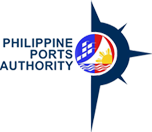NOVEMBER 17, 2016, MANILA—The Philippines is urging the member nations of the Asean Ports Association (APA) to align their policies and port infrastructure improvements to take advantage of China’s Maritime Silk Road (MSR).
Speaking before the delegates of the 42nd APA Main Meeting hosted by the Philippine Ports Authority (PPA), Transport Secretary Arthur P. Tugade said the MSR offers immense growth opportunities as it allows APA members to expand its trading base aside from the traditional markets like the USA, Japan, China, Australia and India.
The Maritime Silk Road, meanwhile, is principally a sea route from the South China Sea and South East Asia, through the Indian Ocean and Middle East area into the eastern Mediterranean. It also extends in other directions. Its main feature is port infrastructure projects, some linking with the parts of the land-based projects.
“I am convinced that opportunities are there for making strategic port infrastructure investment, which can connect major Philippine gateways and other APA ports to huge markets along the Maritime Silk Road Corridor,” Tugade explained.
“The Philippine Government had already expressed its intention to tap the China Maritime Silk Road Initiative (CMSRI) during the visit of President Duterte to China and Japan recently,” Tugade said.
“The Philippines, in particular, is looking forward to tap the huge China tourism market from a stronger relationship with China now. However, it needs to catch up with its neighbors, which enjoy huge cruise tourist arrivals as they continuously prep up their ports for cruise tourism,” Tugade added.
Aside from the MSR, Tugade also stressed the significance of the Maritime Cooperation with Japan anchored on safety and security to the Philippines and the entire APA community considering the group’s strategic program on port safety, health, and environmental management and their initiative in promoting green and sustainable ports through best practices as well as the Asean Maritime Ro-Ro route particularly the Bitung-Davao-GenSan link.
Meanwhile, PPA General Manager Jay Daniel R. Santiago, in his Welcome Remarks said the agency is looking forward to establishing closer ties with the members of APA and furthering active engagement in collaborative efforts along APA priority concerns as foundations for future policy formulation and program planning.
“APA will always take a dynamic and active role in our collective pursuit to attain efficiency and productivity in our ports while gearing up for more challenges that will strengthen the Association’s clout in the Asean community by way of more focused and groundbreaking port and maritime initiatives and projects,” Santiago explained.
“We, in PPA, remain confident that the future of the APA will always remain bright intertwined with the unified efforts of its member nations,” Santiago added.
On the other hand, APA Secretary General Sandhy Wijaya, identified two challenges facing the Asean port industry next year. These include the stronger bargaining power of shipping alliance due to the impact of the shipping alliance reorganization from four shipping alliances into three shipping alliances in 2017 and the increasing number of green vessel which led the ports to provide the green services and conduct the innovations to push the port industry towards a green and environmentally friendly era.
“The strong bargaining power of shipping alliances forces the ports to restructure its cost and redesign its business process in order to increased efficiency to provide the lowest possible tariff,” Wijaya explained.
“Asean Ports have to find the way to cope with the challenges by more investment in port infrastructure, Information Technology and people quality. These challenges will create winners and losers in the terminal business,” Wijiya said.
“Taking this opportunity, I would like to encourage all APA members to strengthen our cooperation in order to cope with the challenges,” Wijiya ended.
The 9-member countries of APA include Brunei Darussalam, Cambodia, Indonesia, Malaysia, Myanmar, the Philippines, Singapore, Thailand and Vietnam.
APA was formed in 1974, as an alliance of port authorities in the ASEAN to serve as the proper forum for the achievement of the following broad objectives: exchange of information, harmonization of trade practices, and promotion/facilitation of trade among ASEAN ports.
The Association is presently composed of regular and associate members collectively recognized as members by the Association. Regular members are those national port authorities and/or the country ports with the government retaining majority interest. Corporatized or privatized ports comprise associate members. These Members determine programs of work and priorities, annual budgets and other affairs of the Association; elect the Chairperson and the Vice-Chairperson; and, attend special meetings to discuss matters on proposals, recommendations or reports of the Working Committee or Technical Committees.
###



